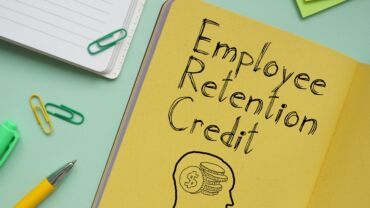Concerns around misleading non-GAAP financial measures are nothing new, but the COVID-19 pandemic has sparked a renewed interest. Though non-GAAP reporting rules haven’t changed, new pandemic-induced considerations and financial reporting challenges related to the presentation of non-GAAP measures have come to light. While the first quarter of 2020 may not have seen much in that regard due in part to the economic impact of the pandemic not being felt by many public companies until March or later, that has undoubtedly shifted, and you may find the guidance in this post useful when disclosing earnings and financial results for the third quarter and beyond.
The COVID-19 pandemic continues to keep companies on their toes as they find themselves confronted with hard questions about how best to conduct their business during this global crisis. The way in which companies use non-GAAP measures to adjust for, or explain the impact of, COVID-19 when reporting earnings and financial results is no exception and shouldn’t be taken lightly, especially given the SEC’s heightened scrutiny in the area.
In late March 2020, SEC Staff at the Division of Corporation Finance issued CF Disclosure Guidance: Topic No. 9, Coronavirus (COVID-19) (“Topic 9 Guidance”), in which they frowned upon companies giving way to any pandemic-driven pressure to “present … non-GAAP financial measures or metrics for the sole purpose of presenting a more favorable view of the company,” and, instead, encouraged companies to share “why management finds the measure or metric useful and how it helps investors assess the impact of COVID-19 on the company’s financial position and results of operations.” The Staff also highlighted their continued focus on companies’ obligations under Regulation S-K Item 10 and Regulation G in regard to the presentation of non-GAAP financial measures, related Compliance and Disclosure Interpretations (C&DIs), as well as recent SEC guidance in Interpretive Release No. 33-10751 on key performance indicators (KPIs) and metrics in Management’s Discussion and Analysis (MD&A) (all available on Thomson Reuters Checkpoint).
This post reminds you of the nature of your obligations related to non-GAAP financial measure disclosure and highlights non-GAAP practices to consider in the context of COVID-19.
Adjusting existing non-GAAP financial measures to reflect COVID-19 factors
When you take a defined GAAP measure and either exclude items that are components or include items that aren’t components, the result is a non-GAAP financial measure. SEC rules and guidance urge that you keep top of mind the following key requirements when making COVID-19-related adjustments to non-GAAP measures in your SEC filings (e.g., registration statements, periodic reports, current reports, and proxy statements) and press releases.
Non-misleading presentation
Regardless of whether you choose to reflect the business impact of COVID-19 by redefining an existing adjustment to a non-GAAP financial measure (e.g., “other income” now includes costs incurred to prevent the spread of the virus) or by creating a new COVID-19-related line-item adjustment, your description of the adjustment must not be misleading. Also, when determining whether a COVID-19-related adjustment is even appropriate in a non-GAAP measure, ask yourself whether the adjustment is (1) directly related to COVID-19 or the resulting economic fallout, (2) expected to become part of the new normal, and (3) objectively quantifiable.
Avoid mischaracterizing recurring adjustments as non-recurring. Though there’s a lot of uncertainty around predicting the duration of COVID-19, you can’t adjust a non-GAAP financial measure “to eliminate … items identified as non-recurring, infrequent or unusual, when the nature of the charge or gain is such that it is reasonably likely to recur within two years or there was a similar charge or gain within the prior two years.” For example, compensation paid to idle employees during the pandemic—though unusual—would be expected to be incurred in the future. Similarly, though depreciation of idle facilities and recurring expenses associated with temporarily idle facilities (e.g., rent and maintenance) may be directly related to the pandemic and objectively quantifiable, they’re expenses that would have been incurred regardless. As another example, if a manufacturing firm were to decide to provide its employees with specialized equipment for the foreseeable future to help prevent the spread of the virus, the cost—though directly related to the pandemic and objectively quantifiable—would likely be considered part of the new normal. So, these adjustments could be subject to SEC challenge.
Avoid individually tailored revenue-recognition principles. Including non-GAAP financial measures that “substitute individually tailored revenue recognition and measurement methods for those of GAAP” is inappropriate and may be misleading. To that end, consider avoiding the presentation of hypothetical numbers that reflect originally budgeted amounts (e.g., expected revenue had the pandemic not occurred or lost revenues).
Avoid cherry-picking adjustments. Adjusting non-GAAP financial measures to exclude non-recurring charges without also excluding non-recurring gains from the same period undoubtedly presents a more favorable picture but can be misleading. For example, let’s say that due to COVID-19, you write off the cost of spoiled food or other inventory because of the unexpected closure of your facility, and pay temporary hazard pay to employees, additional sanitation costs, and penalties for non-performance of contracts resulting from closure of facilities, but you also enjoy increased revenue resulting from work done by employees receiving temporary hazard pay, rent concessions, an insurance recovery, and a tax refund under the Coronavirus Aid, Relief and Economic Security (CARES) Act (also available on Thomson Reuters Checkpoint). Consider excluding both the charges and the gains.
Avoid inconsistencies between periods. Other non-GAAP measures that may be misleading include those presented inconsistently between periods. A prime example is when a company reflects COVID-19-related adjustments for an item during the current reporting period and doesn’t do so for a similar item during the prior period, without appropriately disclosing the change or the reasoning.
Avoid vague or confusing titles and descriptions. When using an industry-specific term to describe a non-GAAP financial measure, consider disclosing any deviation from the term’s general understanding (e.g., changing “modified funds from operations,” as defined by the Investment Programme Association, to include COVID-19 expenses). You may want to avoid catch-all line items that include both pandemic- and non-pandemic-related expenses. You may also want to describe your COVID-19-related adjustments consistently across your earnings releases, periodic reports, and other disclosures.
Prominence
When presenting a non-GAAP financial measure in an SEC filing or in an earnings release, you’re to present the most directly comparable GAAP measure with equal or greater prominence to avoid placing undue prominence on the non-GAAP measure, and any discussion of a non-GAAP financial measure (e.g., analyzing the impact of COVID-19) requires a similar discussion of the comparable GAAP measure in a location of equal or greater prominence.
Also, you may want to confirm that your earnings release headlines and highlights about financial performance and condition comply with this requirement, given the number of stakeholders involved in the drafting process.
Reconciliation
You’re to present a quantitative reconciliation of each non-GAAP financial measure to the most directly comparable GAAP financial measure. For example, if you include new line item “COVID-19-related costs,” you may want to clearly describe the line item in a footnote or other disclosure and note material costs included within, or excluded from, the category, and if you redefine an existing line item in the non-GAAP reconciliation to include COVID-19 expenses, consider adding an explanatory footnote detailing the inclusion of these expenses.
Recognizing that there may be instances where “a GAAP financial measure is not available at the time of the earnings release because the measure may be impacted by COVID-19-related adjustments that may require additional information and analysis to complete,” the Topic 9 Guidance provides that the SEC generally “would not object to companies reconciling a non-GAAP financial measure to preliminary GAAP results that either include provisional amount(s) based on a reasonable estimate, or a range of reasonably estimable GAAP results.”
Be mindful, however, that this position is limited to non-GAAP measures used to report financial results to boards of directors and doesn’t apply to filings where GAAP financial statements are required, such as Form 10-K or 10-Q. Also, when relying on this position, the estimate or estimated range of GAAP results “should reflect a reasonable estimate of COVID-19-related charges not yet finalized, such as impairment charges,” and you “should explain, to the extent practicable, why the line item(s) or accounting is incomplete, and what additional information or analysis may be needed to complete the accounting.”
If transparency is lacking, auditors, for example, may be unwilling to attest to COVID-19-related adjustments. You may also find underwriting banks requesting that a senior financial officer certify in writing that the adjustments are accurate.
Management’s rationale for usefulness
When explaining why management believes that tailoring non-GAAP financial measures to reflect COVID-19-related factors provides useful information to investors regarding financial condition and results of operations, consider avoiding generic boilerplate language. In the case of modifying an existing non-GAAP measure, for example, you’re encouraged to clearly describe why the measure was modified to account for the impact of COVID-19 and why management finds that specific modification useful.
Introducing new methods of presenting non-GAAP metrics to reflect COVID-19 factors
If you adjust your non-GAAP financial measures to reflect the impact of COVID-19, you may find yourself also adjusting your KPIs and metrics. If so, you’re encouraged to follow the principles in the SEC’s guidance on KPIs and metrics in the Interpretive Release referenced above, which similarly calls for transparency.
The guidance urges you to disclose the following, to the extent material, if you change your method of calculating or presenting a non-GAAP financial metric: (1) the differences in the way the metric is calculated or presented compared to prior periods, (2) the reasons for the changes, (3) the effects of these changes on amounts or other information disclosed or previously reported, and (4) any other differences in methodology and results that would reasonably be expected to be relevant to an understanding of its performance.
It’s important that you also review your internal controls and procedures governing the preparation and disclosure of non-GAAP measures and metrics because adjusting them may require management to get the approval of a disclosure committee, audit committee or both.
Takeaways
Steering clear of misleading non-GAAP reporting practices should remain top of mind. However, crises, like the current pandemic, can pressure a company to want to present the most favorable view of financial health, which doesn’t always enhance consistency and credibility in financial reporting and can lead to a misleading picture of performance.
When approaching COVID-19-related adjustments to existing non-GAAP measures and metrics, as well as new ones, it seems that the most effective modifications are those that are described clearly and allow for comparability across periods, especially in light of the evolving nature of the pandemic.







